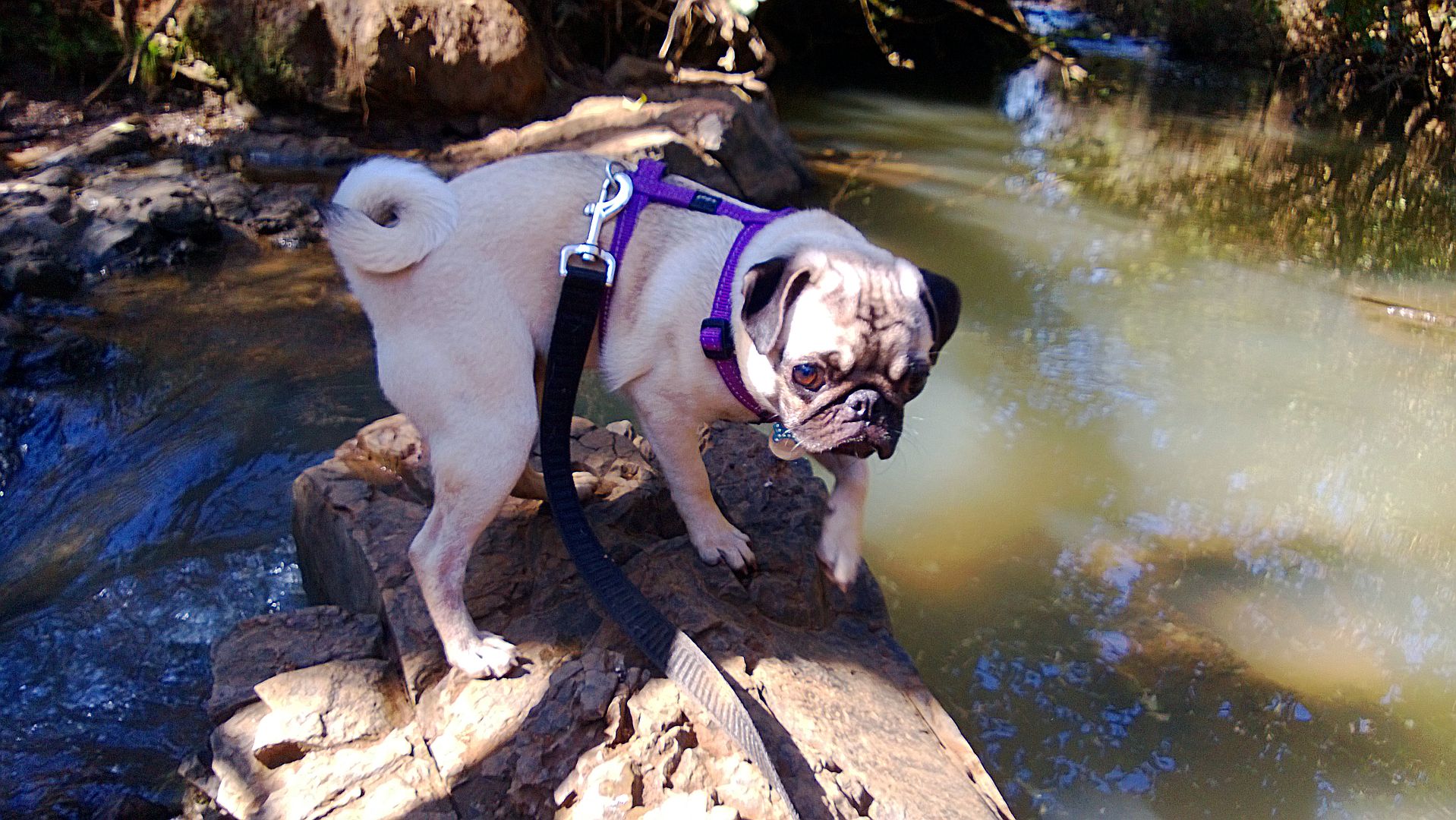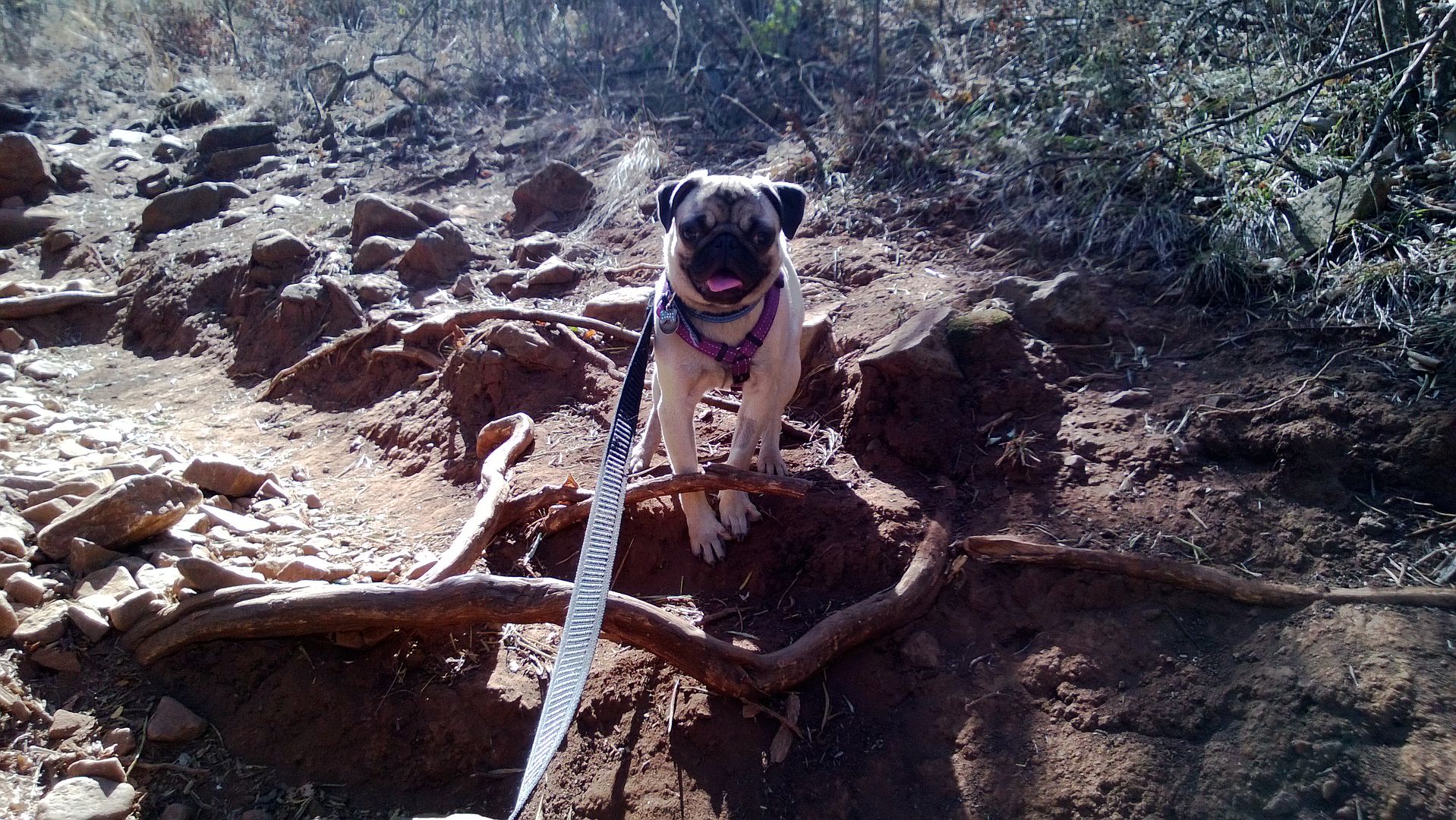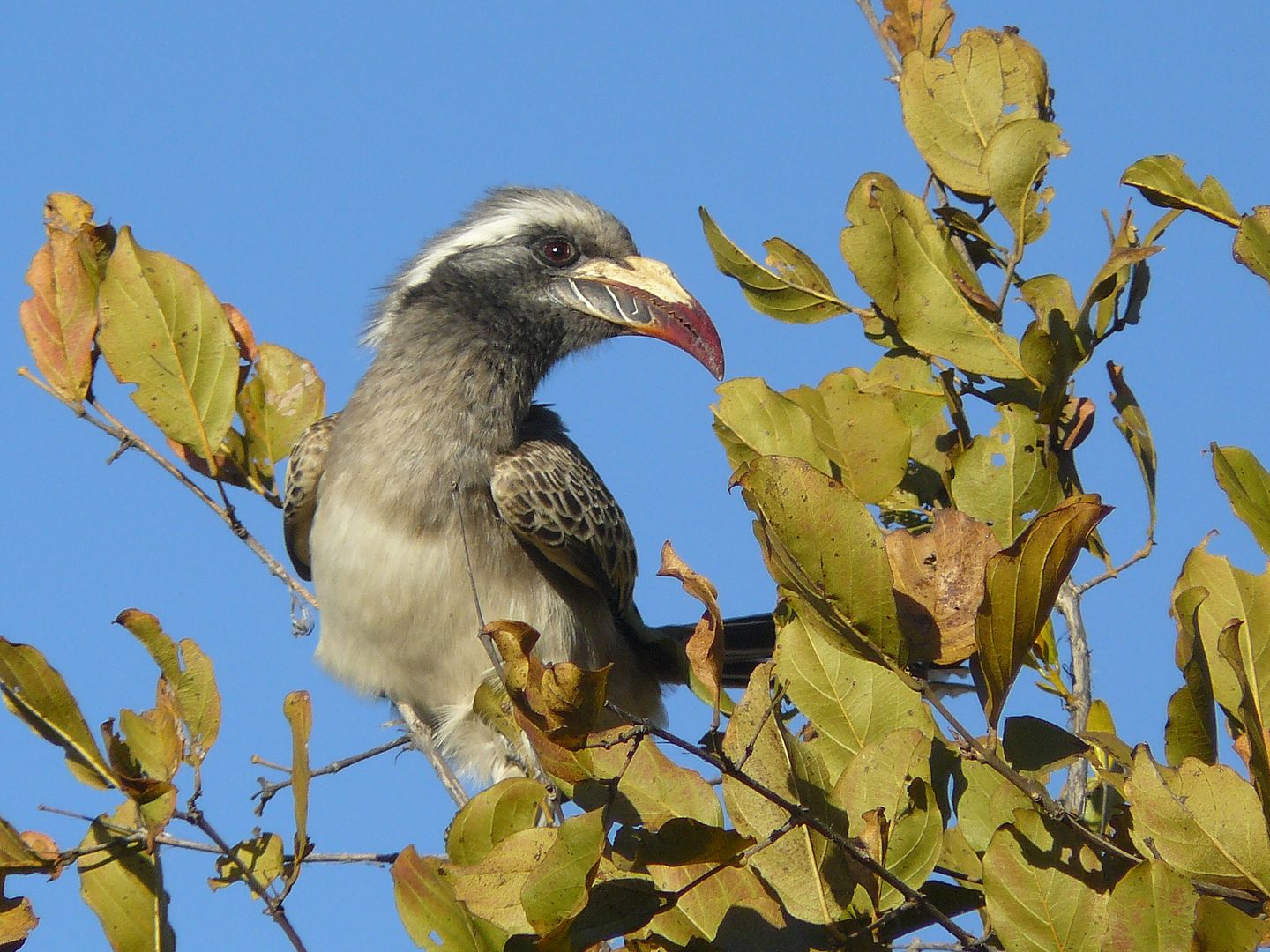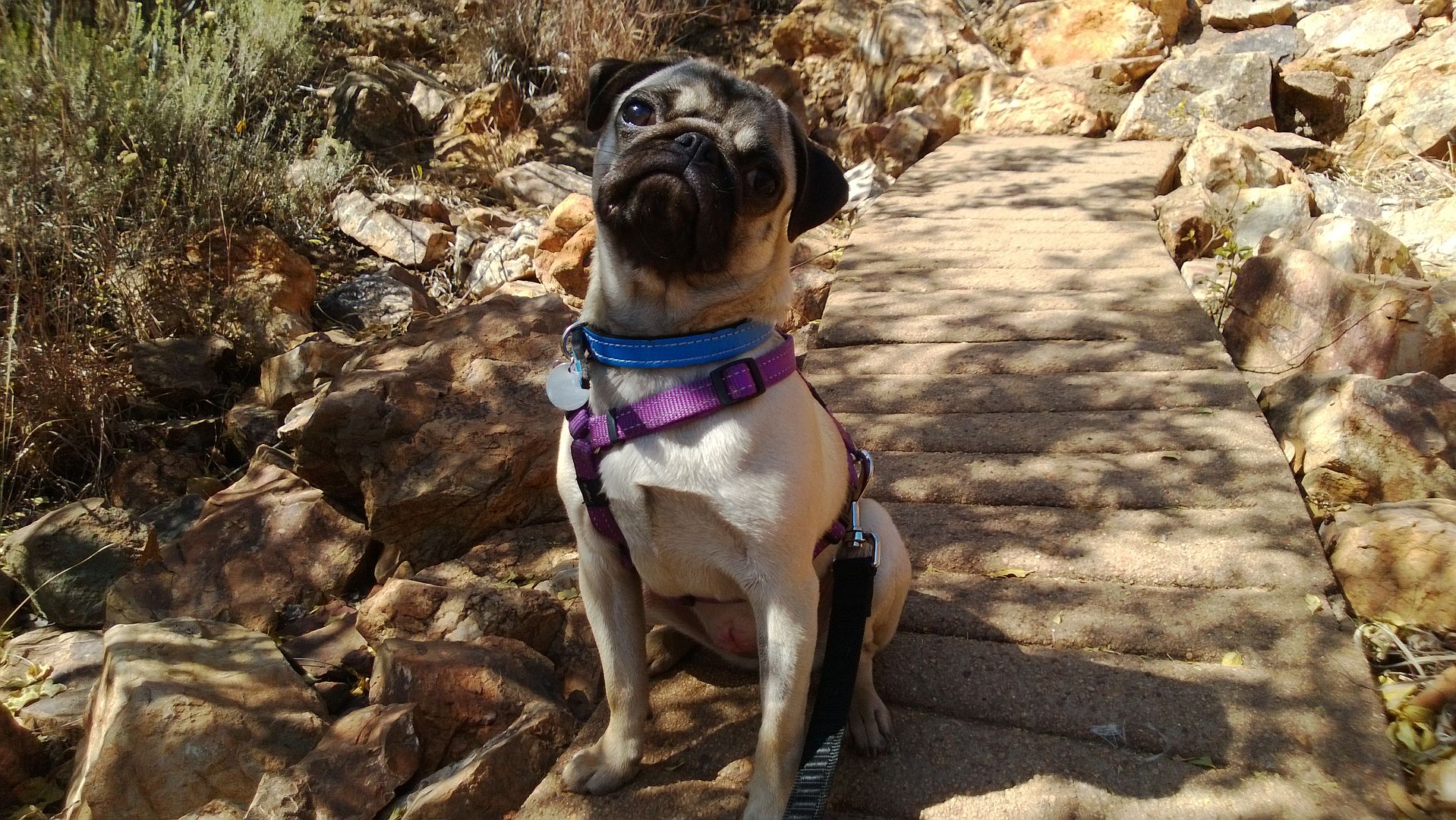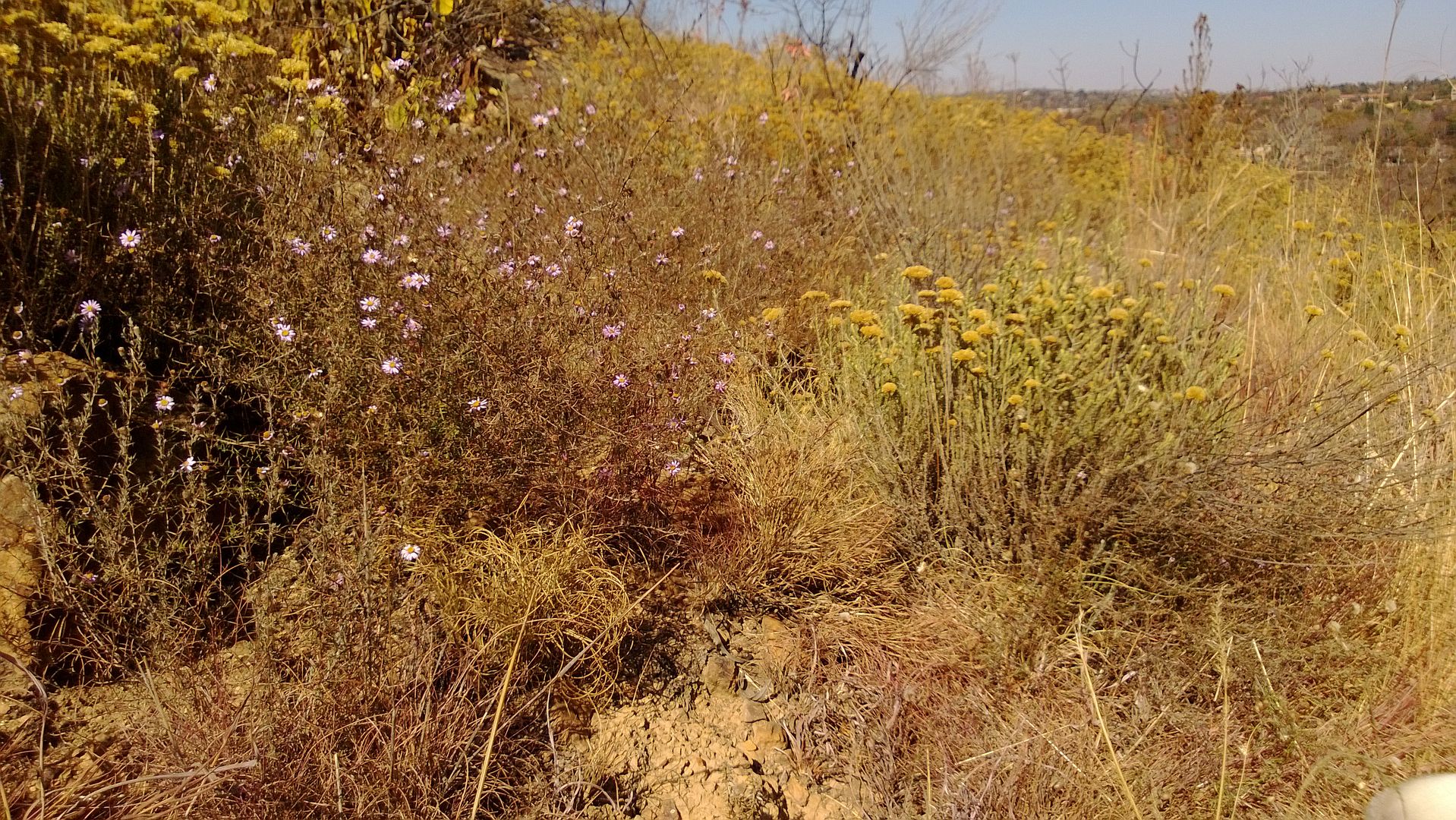I want to make a good, logical, dispassionate argument. But I am woefully biased. Full disclosure: there is a pug on my lap as I write this. I am smitten with my Talos, I was smitten with my Zakkie. The first pug I ever met smote me, like cupid of old, with an arrow right to the left ventrical.
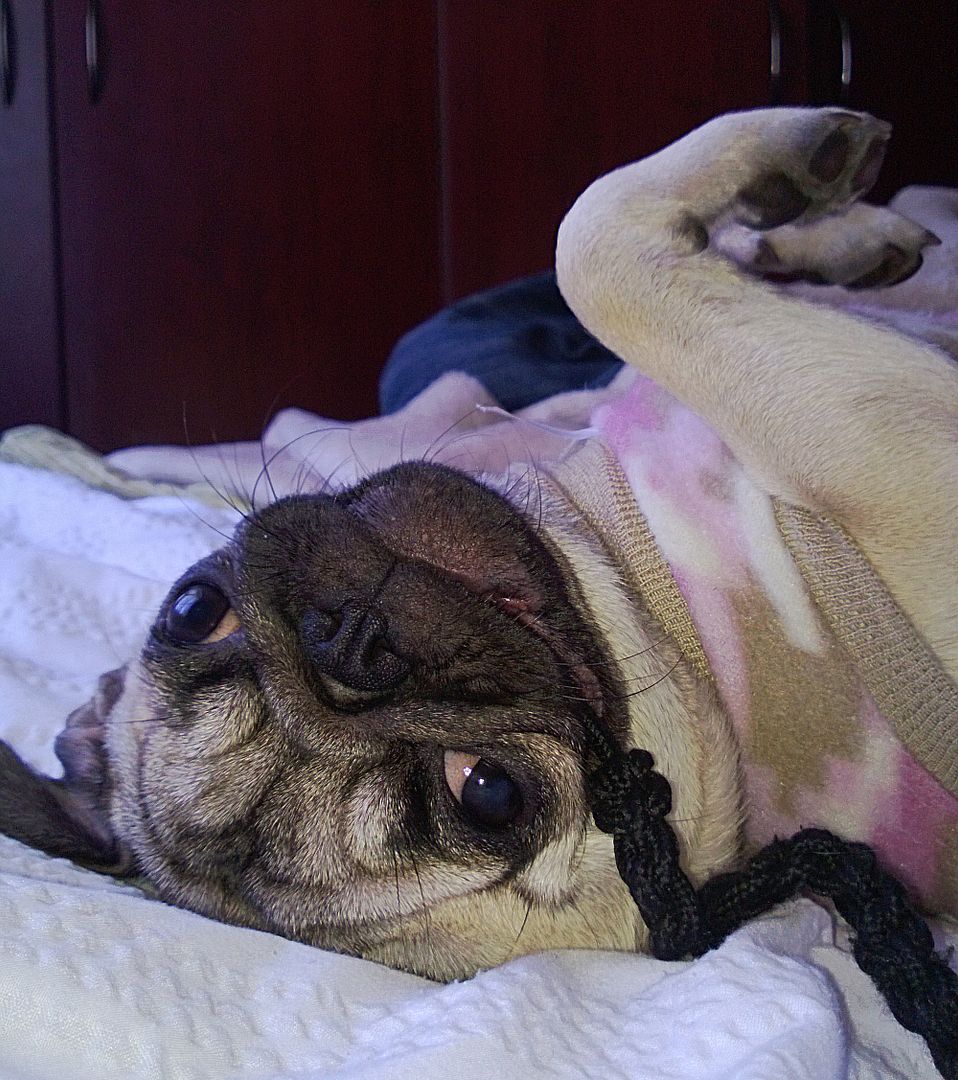 |
| Seriously, though, can you resist this face? |
These attributes - a short muzzle, a tightly curled tail, facial wrinkles - can all be classed as exceptional doggy features. It generally seems that there is a preference for dogs that are 'moderate' in all things. A mesocephalic face (muzzle neither particularly long nor particularly short, so neither Basenji nor Boston Terrier, think Labrador Retriever here). Moderately long legs (move over Whippet! For shame, Valhund). Moderate build, neither heavy nor light (bye bye, Bulldog). In a sense, what they are after is a dog that is wolf-like in appearance. The argument goes that these dogs are the soundest dogs, the least likely to have medical problems due to their appearance - they are the least likely to suffer. Well, that is only partly true.
Dwelling on the health problems, especially in the manner that Pedigree Dogs Exposed did, makes it seem like we have a clear cut idea of what causes these problems - and that clear cause is bad breeding (or, if you will, overly selective breeding to create these more exceptional features). The argument goes that these problems are caused by genetic factors, and all we need to do to eradicate them is to not breed dogs with those genetics anymore, and they'll disappear. But of course, we people being as we supposedly are, we care more about how they look than how much they need to suffer for those looks. The truth of the matter is considerably more complicated than this. We have very little idea which genetics link up with which diseases, and we have very little way of predicting which mating will produce perfectly healthy puppies, and which will not.
This, of course, is not to say that we don't have serious health problems in far too many of our breeds. This is not limited to 'non-wolfy' dogs either, like pugs, bulldogs or shar-pei. The toy Spaniels are tragically compromised with heart problems, the Dalmatians with urinary problems, the Great Danes with their incredibly short lives, Golden Retrievers with cancer, most large breeds with hip dysplasia (but here I always think of the German Shepherds - oh, and as an added bonus, wild wolves too! They just tend to die before they get old and stiff enough for us to notice). Blindness/deafness in blue puppies of many breeds, back problems in achondroplastic dwarfs (Basset hounds, Corgis, Dachshunds), stomach problems in white dogs... the list goes on and on. Every single type of dog is affected by some or another severe ailment with some regularity. I think a lot more can be done to study and understand what causes these diseases, and a lot more can be done to help reduce the incidence in our dog population.
That said, however, a lot of these problems are inherently part of what it means to be a dog, even if that dog is extremely wolf-like in appearance and conformation. We also need a great big helping of reality here - we get old, all of us, dogs and humans. As we age, our bodies deteriorate. The shape of our bodies (and our lifestyles) affect how this deterioration happens to an extent... this is how things work. When we started selecting dogs for certain traits, we chose to breed dogs that exhibited certain behaviours and had a certain appearance. What mattered, health wise, were things that would impede the dog from performing its job. So corgis came to be, with their short little legs, partly because it lets them turn on a dime, partly because it keeps them low enough to work with cattle, partly because we liked the appearance. Yes, they have bad hips. Yes, they are likely to have back problems in their old age. The question is - is this cruelty? The answer to this hinges on suffering. The essential question is: "Is the dog suffering?"
Let us return to pugs. Historically, their function is to be the companion of human beings. It is a fairly old breed (some saying they go back well over a thousand years) and one of a very few breeds that have never had another purpose. There's no denying it, their faces, selectively bred over many years to resemble that of a human child, tends to melt our hearts.They are lovable to a fault, cuddly, and they want companionship, human companionship, as much as they want food (pug people already know, but food is very, very high on a pug's priority list). Taking this into account - that we will find them pleasant to have around, and that they want to be around us, interacting with us, at our speed - which is downright slow by dog standards, they fulfill their bred for purpose very, very well. As well as a Bloodhound sniffs, or a Collie herds. To quote a friend, they don't just sit on laps - they SIT ON LAPS. It's the same difference between a dog that chases sheep and a dog that herds them. A pug without human companionship must suffer, as much as a Greyhound that never gets a chance to run (and then nap somewhere soft and sunny afterwards) must suffer, or a Bloodhound that is somehow forbidden from using its nose must suffer. Their purpose is bred into them as strongly as their appearance.
Does a pug suffer from its short nose? I'd say in most cases, no. Yes, it makes it more likely that they'll get heat stroke, but then, you'd get heatstroke too if you ran around in temperatures that affect pugs. Yes, it makes it that breathing is different for them than it is for other dogs - they won't ever be athletes by Husky standards... but then, neither are you. Considering that they are made to spend time with you, it seems that their physical attributes are a boon, not a hindrance.
It is absolutely a case of human preference to breed dogs that look, and act, like pugs. This is true of every kind of dog. Is a wolf like dog the healthiest type of dog? Only by one, very narrow set of measurements. A wolfy dog, for example, a Malamute, would never sit on my lap happily, curled into my elbow, as little Talos is now - it simply would not fit, or its energy levels and exercise needs would push it to want to move in stead of staying with me for hours on end as I work on my computer. A Terrier would never be content with life in our apartment, with a few short, and one longer walks a day. I can't imagine a Belgian Malinois calmly using a litter tray, like my puggy does, or subsisting on the little food that my puggy subsists on.
A more wolfy dog would suffer, and suffer badly, if put into my pug's life.
Does my dog suffer because of her appearance? If I am correct in stating that appearance and behaviour (and health) are linked with genetics, and that she is especially suited to her life given her appearance and behaviour, it seems logical that the answer must be no. In fact, because she is made for the life she is living, she flourishes.
Are pugs cruelty, then?
I'd say no.





